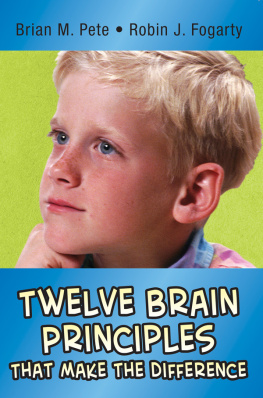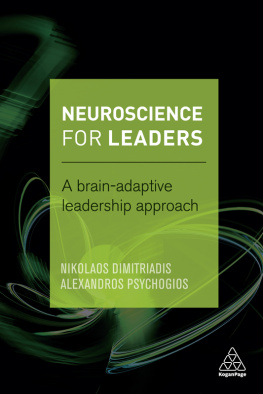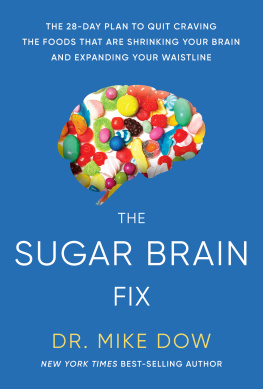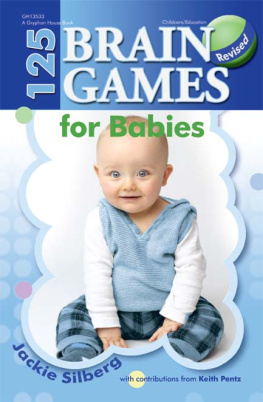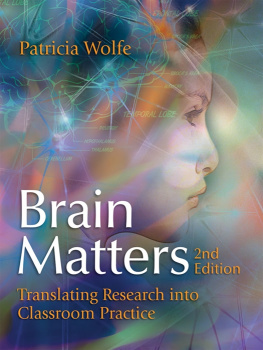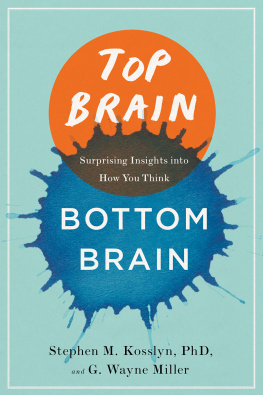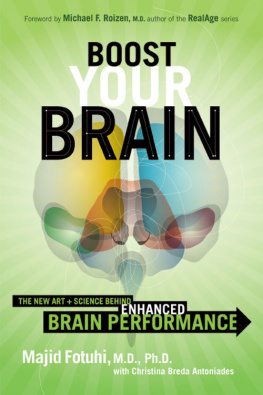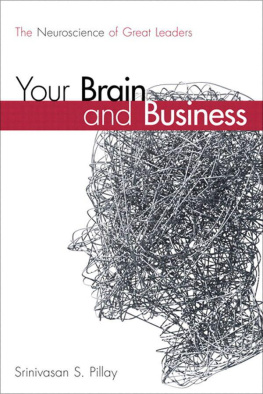Praise for The Whole Brain Business Book
Ned Herrmann was way ahead of his time. Long before neuroscience became all the rage, Ned was talking and writing about the mind-body connection and about how we think impacts how we act. He was a pioneer, a genius, and pathfinder. Ann Herrmann-Nehdi has done the world a huge favor by updating Neds seminal work, The Whole Brain Business Book, and reintroducing us to the power we each have when we use all of what were given. This book is rich in ah-ha moments and a treasure trove of practical tips on how to apply Whole Brain Thinking at work, home, and in the community. This is an extraordinary performance, a tour de force, and a must read for everyone who wants to apply their whole selves in whatever they do.
Jim Kouzes, coauthor of The Leadership Challenge and Deans Executive Fellow of Leadership, Leavey School of Business, Santa Clara University
Ned Herrmann and Ann Herrmann-Nehdi know more about the brain than anyone. If you want to function better, this is a must read.
Ken Blanchard, coauthor of The One Minute Manager
Whether youre new to the Whole Brain model, or ready for a twenty-first century update to the classic volume, this book is a must read for anyone with a brain. You will learn how your mind works, how to improve and expand your thinking style, and how to better understand and communicate with the brains around you.
Daniel H. Pink, author of Drive and A Whole New Mind
This book delivers on two capabilities that leaders at every level should have: first, to truly know that we all actually process the world differently, and second, to start to really think about thinking itself.
David Rock, author of Your Brain at Work, and Director, NeuroLeadership Institute
We know that being innovative requires a Whole Brain process and team. We also know that we live in a whole-brained world. Whether you want to work smarter or appeal to a broad audience, you have to first understand how different people think.
Shannon Loftis, General Manager, Redmond Games Publishing at Microsoft
Ann has done a masterful job of updating Neds original work, by including a contemporary neurological perspective on brain functioning while connecting this to the latest thinking on human performance, interpersonal effectiveness and organizational design. The Whole Brain Model and HBDI are powerful tools for both understanding human behavior and helping everyone to achieve their whole brain potential.
Dr. Mark Schar, Senior Researcher and Lecturer, School of Engineering, Center for Design Research, Stanford University, and former Senior Vice President and Chief Marketing Officer, Intuit, Inc.
I have been in leadership and consulting roles for almost 45 years. The Whole Brain Business Book took me to a new place for the first time in over 20 years. The clients I work with create completely new mindsets as a result of exposure to this approach.
Mike Packard, Founder and CEO, TransCat Consulting, and former Executive Vice President, LensCrafters
An affirming catalyst to elevate us to the level of engagement we desire most in working with others.
Daryl B. Hammett, Sr., CEO, Peabody Executive Coaching and Performance Management Group, and former Senior Vice President and General Manager, Sears Optical
In my experience with technical teams in universities and industry, the Whole Brain model provides a first-order engineering approximation to mental diversity that encourages collaborators to empathize nonjudgmentally, thereby enabling them to better leverage their intellectual excellence, spur their creativity, and make pragmatic contributions that really matter to people.
Charles E. Leiserson, Professor of Computer Science and Engineering, Massachusetts Institute of Technology (MIT)
We have a much stronger unit with everyone understanding what everyone brings to the table. I use Whole Brain Thinking daily. It has made a difference in my personal and professional life, and I know it has for my team members as well.
Brian Wheeler, Director of Operations, Lastar, Inc.
Other models are more focused on behavior, so its harder to have a conversation about problem solving. Whole Brain Thinking is more applicable in the workplace because its about the way you think and solve problems. It facilitates a good work discussion.
Crystal Snoddy, Head of Delivery Excellence, International Hotel Group (IHG)

Copyright 2015 by Ned Herrmann and Ann Herrmann-Nehdi. All rights reserved. Except as permitted under the United States Copyright Act of 1976, no part of this publication may be reproduced or distributed in any form or by any means, or stored in a data base or retrieval system, without the prior written permission of the publisher.
ISBN: 978-0-07-184383-6
MHID: 0-07-184383-3
The material in this eBook also appears in the print version of this title: ISBN: 978-0-07-184382-9, MHID: 0-07-184382-5.
eBook conversion by codeMantra
Version 1.0
All trademarks are trademarks of their respective owners. Rather than put a trademark symbol after every occurrence of a trademarked name, we use names in an editorial fashion only, and to the benefit of the trademark owner, with no intention of infringement of the trademark. Where such designations appear in this book, they have been printed with initial caps.
McGraw-Hill Education eBooks are available at special quantity discounts to use as premiums and sales promotions or for use in corporate training programs. To contact a representative, please visit the Contact Us page at www.mhprofessional.com.
The cartoons used in this book are printed with permission from Randy Glasbergen, www.glasbergen.com.
The four-color, four-quadrant graphic; Herrmann Brain Dominance Instrument; HBDI; Whole Brain; and ROI (Return on Intelligence) are registered trademarks of Herrmann Global, LLC.
TERMS OF USE
This is a copyrighted work and McGraw-Hill Education and its licensors reserve all rights in and to the work. Use of this work is subject to these terms. Except as permitted under the Copyright Act of 1976 and the right to store and retrieve one copy of the work, you may not decompile, disassemble, reverse engineer, reproduce, modify, create derivative works based upon, transmit, distribute, disseminate, sell, publish or sublicense the work or any part of it without McGraw-Hill Educations prior consent. You may use the work for your own noncommercial and personal use; any other use of the work is strictly prohibited. Your right to use the work may be terminated if you fail to comply with these terms.
THE WORK IS PROVIDED AS IS. McGRAW-HILL EDUCATION AND ITS LICENSORS MAKE NO GUARANTEES OR WARRANTIES AS TO THE ACCURACY, ADEQUACY OR COMPLETENESS OF OR RESULTS TO BE OBTAINED FROM USING THE WORK, INCLUDING ANY INFORMATION THAT CAN BE ACCESSED THROUGH THE WORK VIA HYPERLINK OR OTHERWISE, AND EXPRESSLY DISCLAIM ANY WARRANTY, EXPRESS OR IMPLIED, INCLUDING BUT NOT LIMITED TO IMPLIED WARRANTIES OF MERCHANTABILITY OR FITNESS FOR A PARTICULAR PURPOSE. McGraw-Hill Education and its licensors do not warrant or guarantee that the functions contained in the work will meet your requirements or that its operation will be uninterrupted or error free. Neither McGraw-Hill Education nor its licensors shall be liable to you or anyone else for any inaccuracy, error or omission, regardless of cause, in the work or for any damages resulting therefrom. McGraw-Hill Education has no responsibility for the content of any information accessed through the work. Under no circumstances shall McGraw-Hill Education and/or its licensors be liable for any indirect, incidental, special, punitive, consequential or similar damages that result from the use of or inability to use the work, even if any of them has been advised of the possibility of such damages. This limitation of liability shall apply to any claim or cause whatsoever whether such claim or cause arises in contract, tort or otherwise.
Next page

